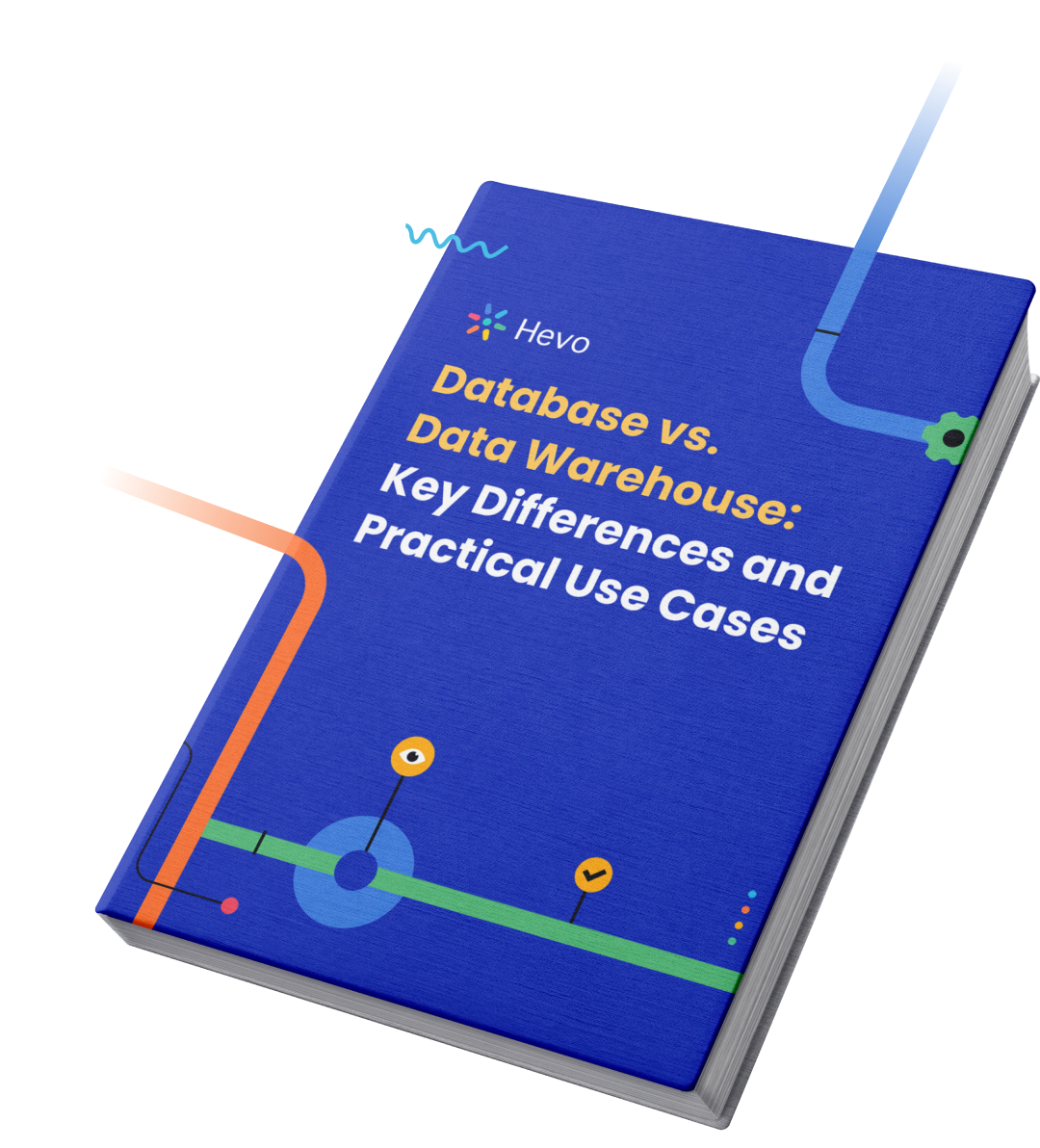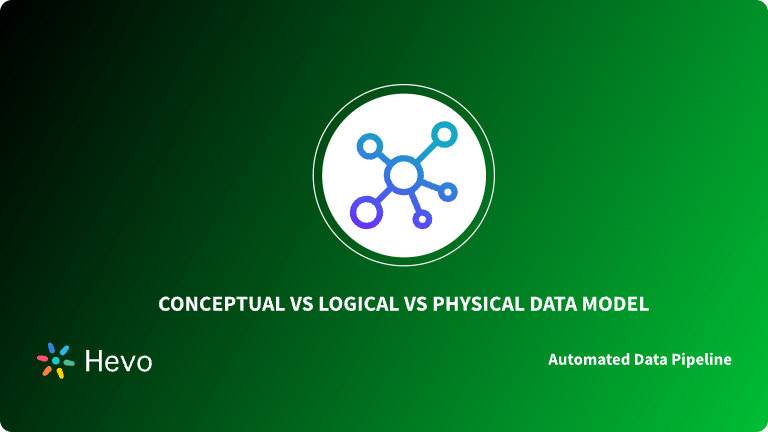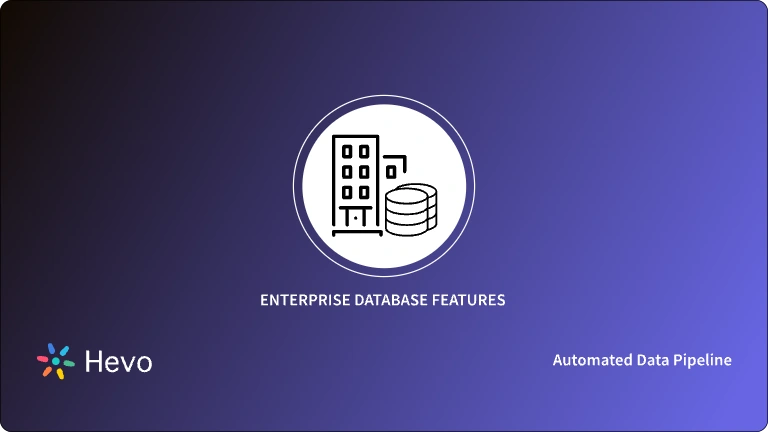In this article, you will be introduced to databases, Transactional Databases, and components of ACID Compliance. You will learn what Database Transactions are, ways to optimize Transactional Database Performance, and some of the popular Transactional Databases.
Simplify your data integration process using Hevo’s no-code data pipeline platform. Load data seamlessly from 150+ sources into your database or data warehouse without technical complexity.
Why use Hevo?
- Quick Setup: Build pipelines in minutes without coding.
- Reliable Data Flow: Ensure real-time and consistent data replication.
- Data Transformation: Customize and enrich your data effortlessly with Hevo’s built-in tools.
Streamline your data integration with Hevo today!
Get Started with Hevo for FreeTable of Contents
Introduction to Databases
A database is a set of data that has been organized in a structured manner. They allow for electronic information analysis and retrieval. Because of the existence of databases, the process of data handling has been simplified to a great extent.
Take the giant social media entity, Facebook, as an example. It must be able to store, alter, and display information on users, their acquaintances, membership activities, emails, adverts, and much more, which couldn’t have been possible without databases. In today’s time, no working entity can survive without adopting a database.
Introduction to Transactional Databases
A transactional database is a database management system (DBMS) that can reverse or scale back a database transaction or activity if it isn’t performed correctly. Though transactional database procedures were formerly a rare function, the preponderance of relational database schema design systems now enables them.
A database transaction in a data matrix comprises one or more data-manipulation instructions and inquiries, each accessing and writing records. These transactional databases can extract and modify vast volumes of data on our private lives, preferences, and purchases.
Transactional data, unlike other types of data, has a spatial component, which implies whether it is timely or has become less useful with time. Instead of being the subject of transactions such as the consumption of a good or the consumer’s identification, It’s more of a standard order to describe the time, place, pricing, online transactions, markdown values, and volumes associated with that particular incident, generally at the point of purchase.
Key features of Transactional Databases
Listed below are some of the key features of Transactional Databases:
- Data Accuracy: Transactional databases are designed to be ACID compatible, which assures that changes to the system survive or break in the same order, preserving a large amount of data security. As a result, transactional databases are essential for financial activities that need a large amount of data fidelity.
- Flexibility: Database users can make changes to a certain data sans actually touching critical or separated data. The interfaces and the criteria for accessing the data storage can be created without modifying the system’s basic architecture. Furthermore, database transactions give consumers a better capacity to recover history when the data is kept in a limited context.
- Speed: Transactional databases excel at actions that can be completed in milliseconds. Whether you’re running statistics on a transactional clone of your database system, probably, the clone is roughly in synchronization with the database server.
- Keeping Track of Operating Systems: If you need to make choices based on statistics that are as current as feasible when managing support services or an entire infrastructure, duplicating the research process may be the best solution.
Understanding Database Transactions
A database transaction can be defined as any process in which documentation is saved, altered, or “controlled” in a system. A database transaction happens independently from several other process automation to ensure that all data stored is available, safe, and consistent.
The necessity to offer the final or operator a mechanism to cohesively and logically transmit data in a confidential way that is not damaged by probable fault conditions inspired the notion of performing transactions with a database. A database transaction’s essential features are atomic, coherent, isolated, and durable, or ACID for abbreviation.
Understanding the Architecture of Transactional Database (ACID Compliance)
All four ACID qualities are enforced through transactions: Atomicity, Consistency, Isolation, and Durability:
1) Atomicity
If a database operation cannot split down into its individual processes, it is termed atomic. A deal is also atomic since all of the actions that take place inside it pass or fail at the same time. If any individual operation fails during a transaction, the entire transaction has been deemed a failure and must be reversed (i.e., rolled back).
2) Consistency
One of the key advantages of using a transaction is that it will keep the data stable, regardless of whether it succeeds or fails. It guarantees that perhaps the data updated by the transaction conforms with all of the column requirements, ensuring data security.
3) Isolation
Each transaction is kept separate from the others. As a result, a transaction should not have an impact on certain transactions that are executed simultaneously. To put it differently, data alterations performed by one transaction must be kept separate from those made by subsequent transactions.
4) Durability
Data alterations that occur inside a completed transaction may be securely regarded to be saved in the system irrespective of what else might follow, which helps with durability. An entry is added to the database transaction log for each successful transaction.
Row-Based Storage/Stores
The idea is that if a client needs to learn a record of information, they will choose to extract every one of the information available about that record. Transactional databases are row-stores, which implies that a full column of data is kept collectively. A database containing inquiry scans each row of data before displaying just the rows specified by the search.
On the other hand, computational storage systems are column stores that keep track of each element separately. Because publishing to an analytical database requires several concurrent uploads across numerous columnar databases, analytical data warehouses are designed for taking readings but never for writing data.
Ways to Optimize Transactional Database Performance
Listed below are the 4 different ways to optimize Transactional Database Performance:
1) Generate Optimal Indexes
When done correctly, indexing may help you reduce data retrieval time and improve overall database speed. Indexes achieve this by creating a data architecture that keeps things organized and enables gathering information simpler; in other words, indexing accelerates and streamlines the data recovery procedure, saving you time and effort.
2) Privacy Level
When it comes to optimizing your transactional data for statistics, the nearest option is lowering the seclusion level. The seclusion level determines which activities “lock” a database, therefore reducing database replication latency and limiting the database’s usage of locking constraints. This will be acceptable to perform, so you’re just altering these parameters on the discover copy.
3) Memory Management of Data
When a large amount of data is published to the databases over time, the records get fractured in MySQL’s core database objects as well as on the disc. The defragmentation of the disc will enable the actual data to be grouped collectively, resulting in quicker I/O activities that will have a significant effect on service query and database performance.
4) Data Model
Tabular databases are built to manage sparse data matrices, which means you almost certainly require one or more solutions when utilizing row storage. One approach to cope with this is to split up your table’s columns into numerous tables. This method helps decrease the number of columns used in each query. If you have a very thin dataset, establishing an entity-attribute-value design may assist, but it adds to the cost of approaches.
Popular Transactional Databases
Listed below are some of the popular Transactional Databases:
1) SQLite
SQLite is a C library that contains a relational database management system. SQLite isn’t a customer SQL database, unlike most other database management systems. Rather, it is included in the final product. The best option for a smartphone device.
More information about SQLite can be found.
2) Oracle
It is well-known across all programmers for its ease of use, well-written documentation, and innovative new capabilities such as JSON from SQL.
More information about Oracle can be found.
3) MySQL
Businesses can start with the public community network and then switch to the corporate system later.
More information about MySQL can be found.
4) Microsoft Access
It’s a Microsoft Database Management System that integrates the linear Microsoft Jet Database Engine, a user interface, and software applications.
More information about Microsoft Access can be found.
Disadvantages of Transactional Databases
Listed below are some of the disadvantages of Transactional Databases:
- Data Finding: Although database transactions have a lot of advantages for consumers, they also have certain disadvantages. Most data becomes less understandable since it is normalized and has a “insert only” function. Most visitors will have a tough time finding their information and will become confused as a result. Additionally, users will have less time or opportunities to alter data in the database.
- Higher Costs: Database management solutions are frequently linked with greater prices since they need complex technology, software, and specialized staff. The cost of setting up the assets needed to run a database management system might include things like training, licensing, and data security.
To store data easily and reliably, a transactional database also demands a significant CPU and a huge working memory. They can also be costly options. - Complexity: A transactional database contains the comprehensive capability to meet a wide range of needs and address various data issues, making it a difficult piece of programming. To effectively use the database and unleash its potential, programmers, architects, and database users must possess the necessary skills. If they don’t comprehend the database, information may be lost, or the database may collapse.
- Inability to Write Data: On a transactional database, when you’re using a copy of your database system for statistics, you won’t be capable of writing additional data to that copy in certain instances. Since the replica’s role is to duplicate the research process precisely, a write executed on the duplicate will not be reflected on the database server.
Conclusion
In the end, it can be inferred the usage of a database requires that the data saved and altered is trustworthy and accurate. Information security will be preserved, and each data transaction would have a consistent state, thanks to the usage of a database transaction. As a result, a database analyst can ensure data analysis remains autonomous of other systems.
You can try Hevo’s 14-day free trial. You can also have a look at the unbeatable pricing that will help you choose the right plan for your business needs!
FAQs
1. What is a transactional and non-transactional database?
Transactional database: Supports ACID (Atomicity, Consistency, Isolation, Durability) properties, ensuring reliable transactions (e.g., commit, rollback).
Non-transactional database: Lacks full ACID support; better for read-heavy workloads where strict transaction guarantees are unnecessary.
2. Is MySQL a transactional database?
Yes, MySQL can be a transactional database when using storage engines like InnoDB, which supports ACID transactions. However, non-transactional engines like MyISAM are also available.
3. What is the difference between a relational database and a transactional database?
Relational database: Organizes data into tables with predefined relationships, based on SQL.
Transactional database: Focuses on ensuring data consistency and integrity during transactions. A relational database can also be transactional if it supports ACID properties.






